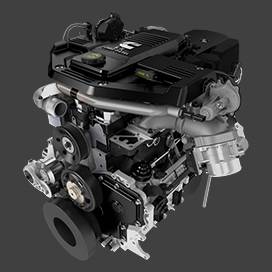Dec . 03, 2024 15:58 Back to list
finned brake drums
Understanding Finned Brake Drums
In the realm of automotive engineering, the braking system plays a crucial role in ensuring the safety and reliability of vehicles. Among the various components that contribute to an efficient braking system, brake drums stand out, especially when enhanced with features like fins. This article aims to explore the significance of finned brake drums, their construction, benefits, and application in modern vehicles.
What are Finned Brake Drums?
Finned brake drums are a particular type of braking component designed with external fins that extend outward from the surface. This design serves a specific purpose—improving the dissipation of heat generated during the braking process. Traditional brake drums can suffer from overheating, which can lead to brake fade, decreased performance, and, ultimately, safety risks. Finned brake drums address these issues by increasing the surface area available for heat dissipation.
Construction and Design
The construction of finned brake drums typically involves cast iron or aluminum materials, chosen for their strength and thermal conductivity. The fins are engineered to optimize airflow around the drum, allowing heat to escape more effectively than with conventional smooth-surfaced drums. This design requires precise engineering to ensure that the fins do not compromise the structural integrity of the drum while still providing maximum air exposure.
Manufacturers focus on creating a balanced design—one that can withstand the forces exerted during braking while also maximizing cooling capabilities. The geometry and orientation of the fins can vary, leading to enhancements in performance based on the specific vehicle application.
Benefits of Finned Brake Drums
The advantages of using finned brake drums are numerous.
finned brake drums

1. Improved Heat Dissipation The primary benefit is enhanced cooling efficiency. When brakes are applied, friction generates heat that can rise to critical levels. Finned drum designs allow for better airflow, keeping temperatures lower and maintaining braking performance.
2. Reduced Brake Fade Brake fade occurs when the braking surfaces overheat, reducing their effectiveness. By dissipating heat more effectively, finned brake drums minimize the chances of brake fade, ensuring consistent performance.
3. Extended Lifespan Because finned brake drums operate at lower temperatures, they tend to wear less quickly than traditional drums. This not only extends the lifespan of the drums themselves but also lengthens the life of brake pads and other associated components.
4. Enhanced Performance Vehicles fitted with finned brake drums often demonstrate improved stopping power and quicker response times. This is especially vital for high-performance or heavy-duty vehicles that require reliable braking capabilities under demanding conditions.
5. Lightweight Options Some modern finned brake drums utilize lightweight materials like aluminum, decreasing overall vehicle weight. This can contribute to better fuel efficiency and performance without sacrificing safety.
Applications
Finned brake drums are widely used in various automotive applications. They are common in performance vehicles, heavy-duty trucks, buses, and other machinery where braking efficiency is paramount. As electric and hybrid vehicles gain popularity, the need for efficient braking systems has never been greater, and finned brake drums present a viable solution for these new technologies.
Conclusion
In summary, finned brake drums are a significant advancement in brake technology that offers a wealth of benefits to vehicle performance and safety. By improving heat dissipation, reducing brake fade, and extending component lifespans, these specialized drums play an essential role in modern braking systems. As we continue to innovate and push the boundaries of automotive engineering, the importance of effective braking solutions, like finned brake drums, can’t be overstated. As demand for high-performance and safer vehicles increases, so too will the relevance of technologies that enhance braking efficiency.
-
Scania Brake Drums: OEM Quality for Optimal Safety & Durability
NewsAug.16,2025
-
R.V.I: Advanced Remote Visual Inspection for Precision
NewsAug.15,2025
-
Discover HYUNDA: Innovative Vehicles, Equipment & Solutions
NewsAug.14,2025
-
R.V.I: Unlock Advanced Insights & Real-time Performance
NewsAug.13,2025
-
Kamaz Brake Drum: Durable & Reliable for Heavy Duty Trucks
NewsAug.12,2025
-
Heavy Duty Iveco Brake Drum - Premium Quality & Safety
NewsAug.11,2025
